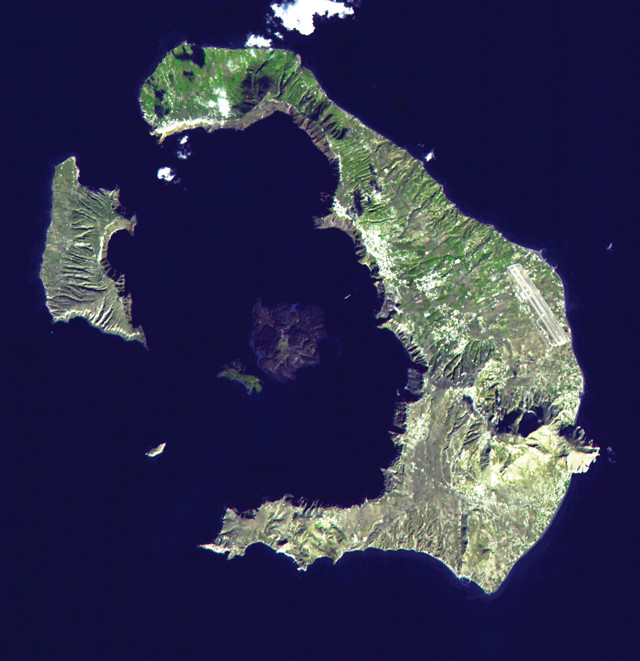
by Kate S. Zalzal Tuesday, March 14, 2017

The massive 1650 B.C. eruption of Santorini caused the volcano to collapse, producing a caldera. The volcano is now a series of islands. Credit: NASA/GSFC/METI/ERSDAC/JAROS, and U.S./Japan ASTER Science Team.
The 1650 B.C. eruption of the Greek island volcano Santorini, located in the Aegean Sea, triggered tsunamis that heavily damaged coastal towns and disrupted vital shipping and trade operations, events thought to be important factors in the demise of the ancient Minoan culture.
Collapse of the volcano’s caldera has been the favored tsunami-triggering mechanism — a theory that relies on the caldera having been connected to the sea by a strait. However, in a new study in Nature Communications, Paraskevi Nomikou, of the University of Athens, and colleagues reported that new bathymetric and seismic evidence, along with digital elevation modeling, indicates that the caldera was actually isolated and blocked from the sea by volcanic deposits ejected early in the eruption. The caldera collapse was thus unable to produce tsunamis of the scale indicated by coastal deposits in the region, the researchers suggested.
Nomikou’s team concluded that pyroclastic flows from the volcano into the sea, combined with submarine slumping of pyroclastic deposits, were the main tsunami-producing mechanisms. Pyroclastic flows have also been implicated as the main cause of tsunamis during the 1883 eruption of Krakatoa in Indonesia. Nomikou says the new data from Santorini offer further evidence that tsunami-triggering pyroclastic flows are a worldwide hazard.
© 2008-2021. All rights reserved. Any copying, redistribution or retransmission of any of the contents of this service without the expressed written permission of the American Geosciences Institute is expressly prohibited. Click here for all copyright requests.